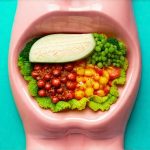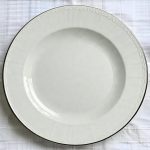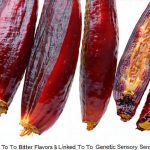The vibrant world of food isn’t merely about taste; it’s a visual feast that often precedes our first bite. We intuitively associate color with freshness, ripeness, and even nutritional value. But beyond these immediate perceptions, the colors in our food may actually play a subtle – yet significant – role in how our bodies digest them. This connection isn’t necessarily about direct impact on digestive enzymes, but rather the interplay between psychological responses to color, anticipatory digestion (the body preparing for food based on sensory cues), and the inherent nutritional properties often linked to specific pigments. Understanding this relationship can offer a more holistic appreciation of what we eat and how our bodies process it.
The idea that color influences digestion stems from a complex interaction of biological and psychological factors. Our brains begin processing visual information before the food even reaches our mouths. This triggers anticipatory digestive processes – saliva production, enzyme release, gut motility – all primed based on what the brain perceives. Color acts as one of these critical sensory signals. For example, warmer colors like red and orange often stimulate appetite, while cooler colors may have a more calming effect. Furthermore, color is frequently associated with certain nutrients; green evokes thoughts of vitamins and minerals from vegetables, while deep purples suggest antioxidants in berries. This association isn’t always accurate but influences our expectations and how we experience food. If you notice your digestion slows down in the evening, it may be worth investigating further.
The Psychology of Color & Digestive Anticipation
The way we perceive color is deeply rooted in psychology. It’s not simply a matter of seeing wavelengths of light; it’s about the associations, memories, and emotional responses that colors evoke within us. These reactions aren’t universal but are shaped by cultural norms and personal experiences. Red, for example, often signals energy, excitement, or even danger, potentially increasing alertness and stimulating digestive processes associated with quicker consumption. Conversely, blue is frequently linked to calmness and suppression of appetite – a reason it’s rarely used in food packaging or restaurant decor. This anticipatory effect can be powerful; studies have shown that people tend to eat faster when surrounded by red hues and slower when exposed to blue.
- The impact isn’t limited to individual colors, but also the combinations of colors present in a meal.
- A visually appealing plate – one with contrasting colors and balanced presentation – is more likely to trigger positive emotional responses and enhance digestion.
- Conversely, a dull or unappetizing color scheme might reduce appetite and potentially hinder digestive processes.
This pre-digestive phase is crucial because it prepares the body for optimal nutrient absorption. When we see food that looks appealing (partly due to its color), our brains signal the digestive system to ramp up production of enzymes like amylase (for carbohydrate digestion) and lipase (for fat digestion). This means that even before taking a bite, the body is already working to break down the food we’re about to consume. Color acts as a key trigger in this anticipatory process. The more visually appealing the food – based on our individual preferences and cultural context – the more efficiently our digestive system may prepare itself. Understanding gut bacteria can help optimize your digestion.
Pigments & Their Nutritional Linkages
The color of food isn’t just aesthetic; it’s often indicative of the phytonutrients present, which are naturally occurring compounds with potential health benefits. These pigments aren’t directly responsible for digestion in a mechanical sense, but they can influence the nutritional value and overall digestive experience. For instance, carotenoids – found in orange and yellow fruits and vegetables like carrots and sweet potatoes – are precursors to Vitamin A, essential for healthy vision and immune function. Anthocyanins, which give berries their deep purple or blue hues, are potent antioxidants that protect cells from damage. Chlorophyll, responsible for the green color of leafy vegetables, is believed to have detoxifying properties.
These phytonutrients aren’t digested themselves in the same way as macronutrients (proteins, carbohydrates, and fats). Instead, they contribute to overall health and well-being which indirectly supports optimal digestive function. A body nourished with essential vitamins and minerals tends to have a more robust and efficient digestive system. Moreover, the presence of these pigments often indicates higher levels of fiber – an essential component for healthy digestion. Fiber aids in regulating bowel movements, promoting gut microbiome diversity, and preventing constipation. The color of food therefore acts as a visual cue to potential nutritional richness. You can learn more about what your gut test results might not be telling you.
The Role of Red Foods
Red foods—tomatoes, strawberries, red peppers, beets—often contain lycopene and anthocyanins. Lycopene is a powerful antioxidant linked to reduced risk of certain cancers, while anthocyanins provide anti-inflammatory benefits. From a digestive perspective, the vibrant color of these foods can stimulate appetite, potentially leading to increased food intake – which isn’t necessarily negative if those foods are nutrient-dense.
- The psychological effect of red is often associated with energy and stimulation.
- However, it’s important to note that excessive consumption of highly acidic red foods (like tomatoes for some individuals) can trigger heartburn or acid reflux in sensitive digestive systems.
- Processing methods can also impact digestibility; cooked tomatoes are actually more readily absorbed than raw ones due to the breakdown of cell walls.
The vibrant hue of red foods often signals ripeness, indicating higher sugar content and easier digestibility. This is particularly true for fruits like strawberries and raspberries. The presence of fiber in these foods further aids in digestive regularity. If you experience GERD, consider the benefits of raising the head of your bed.
Navigating Green Foods
Green vegetables—spinach, kale, broccoli—are rich in chlorophyll, vitamins K, A, and C, and dietary fiber. Chlorophyll itself isn’t directly digested but supports detoxification processes within the body, which indirectly benefits overall gut health. The high fiber content promotes healthy bowel movements and feeds beneficial gut bacteria.
- Green foods can sometimes be more challenging to digest for some individuals due to their complex cellular structure.
- Thorough chewing is essential to break down these fibers effectively.
- Cooking methods also play a role; steaming or lightly sautéing preserves nutrients while making them easier to digest than raw, tough greens.
The slightly bitter taste of some green vegetables can be an acquired preference, but it’s often indicative of their nutrient density and potential health benefits. Embracing the subtle flavors of these foods is key to enjoying their nutritional advantages and supporting a healthy digestive system.
The Impact of Purple & Blue Foods
Purple and blue foods—blueberries, blackberries, purple cabbage—are packed with anthocyanins, potent antioxidants known for their anti-inflammatory properties. These pigments contribute to cellular health and may protect against oxidative stress, which can hinder digestive function. While less common in many diets, incorporating these colorful options offers a unique nutritional boost.
- Anthocyanins are relatively stable during cooking but can be affected by pH levels.
- Combining purple foods with vitamin C enhances anthocyanin absorption.
- The vibrant color of these foods often indicates high antioxidant content, suggesting potential benefits for gut health and overall well-being.
The subtle sweetness of berries makes them easily digestible, while the fiber content supports digestive regularity. Purple cabbage offers a unique textural element and provides valuable nutrients that contribute to a balanced diet and healthy digestive system. Sometimes what doctors mean when they say your GI tests are ‘normal’ needs further exploration.
It’s important to remember that color is just one piece of the puzzle. Individual digestive systems vary greatly, and factors like genetics, gut microbiome composition, stress levels, and overall lifestyle play significant roles in how we process food. While appreciating the visual appeal and potential nutritional benefits associated with different colored foods can enhance our dining experience and potentially support digestion, it shouldn’t replace a balanced diet and mindful eating habits. It’s also helpful to understand what your poop can reveal about your digestion. You might even consider what a SmartPill can show about your digestion.


















